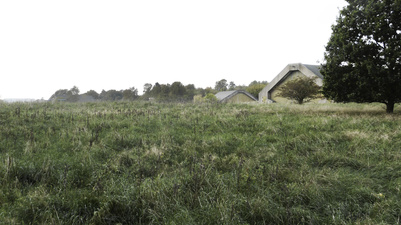The Sea is Rising
The climate is changing, earth is getting warmer, and sea levels are rising. Denmark is among the most affected countries in Europe. Aside from sea level rise, cities also have to be protected against floods, and as weather is changing floods are expected to occur more often and hit harder than today. Nakskov on the western coast of island Lolland is on the top-ten list of towns in danger, as it is situated at the end of a fjord where water can be pressed in by storms. The town needs to be protected against sea water levels 2.5 meters above todays normal level.
Nakskov is an old and surprisingly urban town. As it is an old trading port, water has always been crucial to the towns' existance and economy, but Nakskov has also been flooded many times. After a major flooding of large parts of Lolland in the late 1800s, a dike was built along the southern coast, but the town of Nakskov remains poorly protected. The rapid industrialization of the town has given it its unique character with large contrasts and many interesting urban rooms and views. This contrast is very present in the harbor area.
This project suggests two different strageies for flooding protection for the two sides of the harbor. On the southern side, dominated by large scale industrial structures, protection is implemented on a building-scale level. The concrete structures will be able to stand in salt water after the foundation is modified. The steel reinforcement needs to be separated from sea water by at least 45 mm of concrete, and this is done by casting a new layer of concrete around the old structure. A layer of tiles makes the added ”skin” water proof and also gives interesting indoor environments.
The northern side of the harbor is where the old town is, with housing, wooden houses and basements; structures that cannot stand floods. The old docks are not in use for industrial/commercial purposes any more, the space is undefined and out of scale, and mostly used for parking lots. A wall could protect the cultural heritage and at the same time define interesting urban spaces. The wall is an integral part of a new concrete waterfront and in the new buildings on the site. It is even used as a part of the interior.























